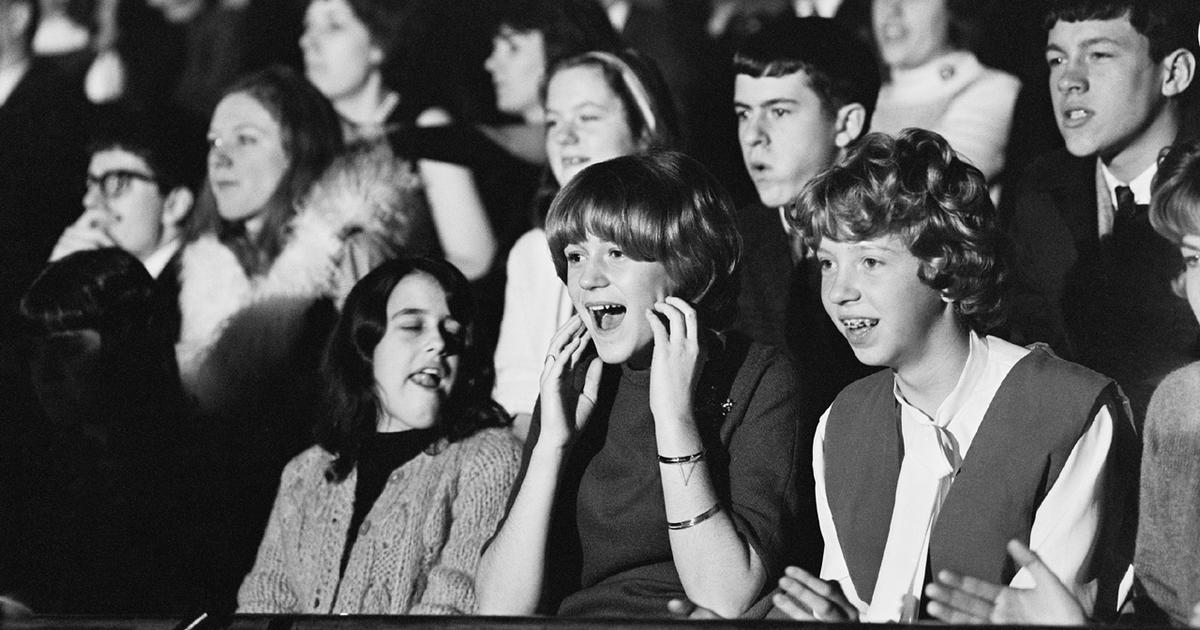
With the television offering accessible viewership for live performances like The Beatles’ debut on the Ed Sullivan Show, social forces coincided with heightened access to television to popularize both the performance and the group. The television aided in the sexual revolution that resulted from The Beatles’ initial performance by disseminating The Beatles and their music to an unprecedented number of eyes and ears. Arguably the most impacted by the television was the sexual revolution that the televised live performance enhanced. Beginning with the youth rebellion inherent in the 1950s with the spread of rock n’ roll, “…these baby boomers far outnumbered the generation that, thanks to the censors, had only been able to see Presley’s upper torso on ‘The Ed Sullivan Show.’ Seeing (whole) Beatles on Sullivan was exciting, but not enough. Watching the band on television was a thrill—particularly the close-ups…” (Hess 1992, 86).
The Beatles’ initial appearance on television garnered female attention because “…sex was an obvious part of the excitement” (Hess 1992, 90). As mentioned previously, the idea of rebellion as it relates to rock n’ roll is intrinsically connected to the popularity of The Beatles with America’s female youth: “it was rebellious (especially for the very young fans) to lay claim to sexual feelings. It was even more rebellious to lay claim to the active, desiring side of a sexual attraction: the Beatles were the object; the girls were their pursuers” (Hess 1992, 90). With televisions present in most American households at the time, this rebellion was accessible for young audiences—making it easier than ever to engage in rebellious activity as compared to the Elvis hype ten years prior.

The performance also came in the wake of the assassination of then President John F. Kennedy and the height of the civil rights movement, which potentially played a role in the craze known as ‘Beatlemania.’ In other words, fans of The Beatles knew how to riot, based on the fact that America had been wrestling with “…social problems that not even Reader’s Digest could afford to be smug about—racial segregation, for example, and the newly discovered poverty of ‘the other America’ (Hess 1992, 88).
The notion that social unrest was the prevailing culture of the time, it is no surprise that this energy was diverted into the pop culture and entertainment scene, and likely explains Beatlemaina alongside the sexual revolution. Additionally, with America’s eyes already glued to the television watching news reports of riots, the driving force behind viewership was present, and television provided a visual element that had not previously been so widely available.
The combination of the already thriving sexual revolution driven by rebellious teens and social unrest because of the assassination of President John F. Kennedy and the civil rights movement facilitated for the immense popularity and dissemination of The Beatles’ unique style.
